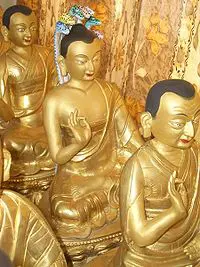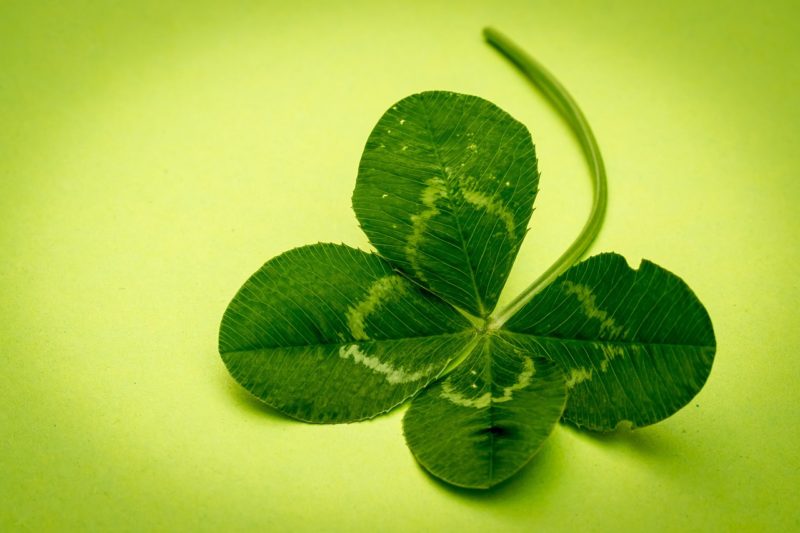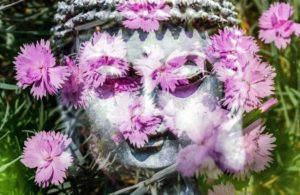Every religion has its own particular characteristics that are unique to it.
In order to differentiate Buddhism from other religions (Brahmanism and the teachings of the Six Masters of the Exoteric Path), the three Dharma seals or four Dharma seals are held up as a ‘sign or banner that this is what Buddhism is about’.
However, even though they are the banner seals of the teachings, there are two types, three Dharma seals and four Dharma seals, so it is a bit of a question as to which one is correct in the end, whether they are both correct or whether there is some significance to the increase or decrease.
In this paper, therefore, we will first follow the general Buddhist interpretation of the following two points, while also presenting Neo Buddhism’s own interpretation.
- What are the three Dharma seals and the four Dharma seals?
- What is the relationship between the three Dharma seals and the four Dharma seals?
What are the three Dharma seals and four Dharma seals?
For those who simply want to get to the point, I will give a basic definition first.
Definition of three Dharma seals and four Dharma seals
three Dharma seals
- All compounded things are impermanent.
- All phenomena are empty and devoid of self.
- Nirvana is true peace.
four Dharma seals
- All compounded things are impermanent.
- All contaminated things are suffering.
- All phenomena are empty and devoid of self.
- Nirvana is true peace.
Simply put, when you add “All contaminated things are suffering” to the three Dharma seals, you get the four Dharma seals.
Contents of the three Dharma seals and four Dharma seals
- All compounded things are impermanent : All phenomena are transforming and changing
- All phenomena are empty and devoid of self : No entity can exist by itself
- Nirvana is true peace : Blowing away worldly desires can bring peace of mind.
- All contaminated things are suffering : All that is formed is suffering
The word “Dharma” is “dhamma” in Pali and “dharma” in Sanskrit, but the original meaning is “that which is preserved”, meaning “existence”.
When talking about existence, it becomes “teaching”, so “Dharma” can also derive the meaning “teaching, doctrine”.
When we speak of “Buddha Dharma”, “Dharma” has the latter meaning.
These are the definitions of the three Dharma seals and the four Dharma seals and their contents.
From the three marks of existence (impermanence, suffering and selflessness) to the three Dharma seals
In fact, the term “three Dharma seals” did not exist in the time of Buddha Shakyamuni.
The three Dharma seals were not coined until later, during the age of the later schools of Buddhism.
However, the Buddha naturally preached the ideas on which the three Dharma seals are based.
These are impermanence, suffering and selflessness, which together are known as the ‘Three marks of existence,
What is impermanent is suffering. That which is suffering is selflessness (Saṃyukta Āgama)
This is a kind of poetic phrase, which requires interpretation.
The phrase “impermanence is suffering” means that, despite the passing of all phenomena, the human condition is suffering because of our attachment to material things.
The phrase “suffering is selflessness” means that “as one who is in such a state of suffering, one must know that one is also selfless”.
People create attachments to money, titles, fame, cars… all sorts of things because they think they are things that exist and have substance.” You can’t be attached to things that “don’t exist”, can you?
The idea of ” selflessness ” is that there is no eternal, immortal, unchanging entity in this phenomenal world.
Everything only seems to “exist” at one time or another in various relationships.
All beings cannot exist by themselves. This is also called co-dependency.
This may be a little confusing, so let’s use a simple analogy to illustrate.
Try tying two ropes together vertically and horizontally in a criss-cross pattern. Of course, you can use an image.
If you do this, a knot is formed.
This knot does indeed appear to be ‘there’. However, as soon as the rope is untied, this knot disappears.
Yes, the knot appears by chance in the “relationship” between the vertical and horizontal ropes, and only seems to “exist” for a moment.
In this way, what cannot exist by itself, what does not have its own nature, is called “selflessness (Non-self).
This is another teaching on how to break attachment. It means that attachment to that which is essentially ‘absent’ is what causes suffering.
“Impermanence” and ” selflessness” seem a bit similar, but “impermanence” is “not an entity (that really exists) because it changes in the flow of time”. “.
On the other hand, ” selflessness” means that “in spatial relationships, it only appears to exist for a moment, but it is not an entity”.
Both are permeated by ” origins “, which is the basis of Buddhism.
The temporal dimension of “dependent co-arising” is “impermanence”, while the spatial dimension of “dependent co-arising” is ” selflessness”.
*Reference article: Law of Dependent Co-Arising – Thinking of Dharma in “Being and Time”
We ordinary people create suffering by clinging to things that are essentially “absent”. This is what is preached in the poem.
Please taste the words again.
What is impermanent is suffering. That which is suffering is selflessness (Saṃyukta Āgama)
And when we correctly observe impermanence and selflessness, we can leave attachment behind. This state of non-attachment is ‘nirvana’.
The word “nirvana” is “nippana” in Pali and “nirvana” in Sanskrit, which means “to blow away” in the original sense.
Here, it means ‘to extinguish the fire of attachment and worldly desires and to attain a tranquil state of mind’.
As mentioned above, the order preached in the early sutras is: impermanence → suffering → selflessness → nirvana.
Although not summarised as ‘three Dharma seals’ or ‘four Dharma seals’, there are several other examples of these four being preached in sequence.
The above has been briefly explained along the lines of ‘impermanence → suffering → selflessness → nirvana’, and these four will later be called the Four Dharma Seals.
To the three Dharma seals by Nagarjuna
There are references to the three Dharma seals in Nagarjuna’s Treatise on the “Da zhidu lun” a treatise on Mahayana Buddhism, also known as ‘The Founder of the Eight Sects’.
The Buddha preached the three Dharma, which then became Dharma seals. “Da zhidu lun”

So it was here that the three Dharma seals were developed by Nagarjuna as the ‘banner of Buddhism’.
Relationship between the three Dharma seals and the four Dharma seals
Adding “All contaminated things are suffering” to the three Dharma seals resulted in the four Dharma seals.
However, “Nirvana is true peace” and “All contaminated things are suffering” have almost opposite meanings.
It might then be thought that the inclusion of “Nirvana is true peace” and “All contaminated things are suffering” in the Four Dharma Seals is a contradiction in terms of teaching.
In the end, the state of being attached to various things and creating suffering without knowing the truth that “the phenomena of this world are impermanent and selfless” is “All contaminated things are suffering”.
On the other hand, the state in which one knows the truth that the phenomena of the world are impermanent and selfless, is free from attachment (Moksha) and has attained a state of tranquil tranquillity is called “Nirvana is true peace”.
Then we can say that there is a difference between the three Dharma seals and the four Dharma seals, or in this case, the difference between “All contaminated things are suffering” and “Nirvana is true peace”, which can be simply put as “before/after use” and “before knowing the truth/after knowing the truth”.
Both are important perspectives.
Restated in Heidegger’s style, it can be organised as follows.
- Inauthenticity: All contaminated things are suffering
- Authenticity: Nirvana is true peace
First, we must know that we are in a state of “Inauthenticity”. We will not seek the truth if we remain mired in worldliness.
We ordinary people, while seeking happiness, fall into suffering and do not even notice that it is suffering.
Only when one realises that the worldly is suffering because it is mundane (i.e. all suffering) and that it is “Inauthenticity” state, can one start the search for what is the “Authenticity” state’.
Then the encounter with the sacred and the truth awaits.







Comments